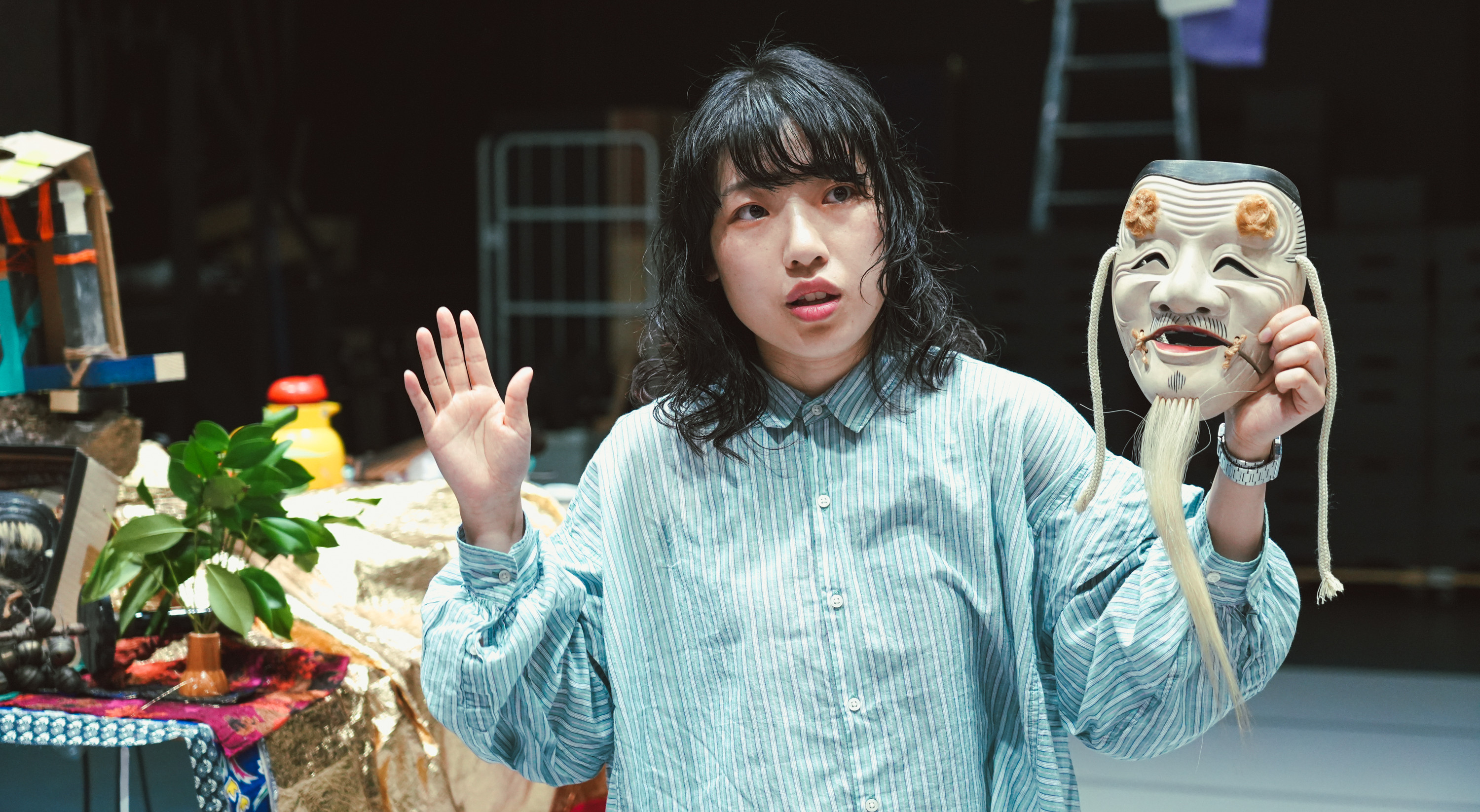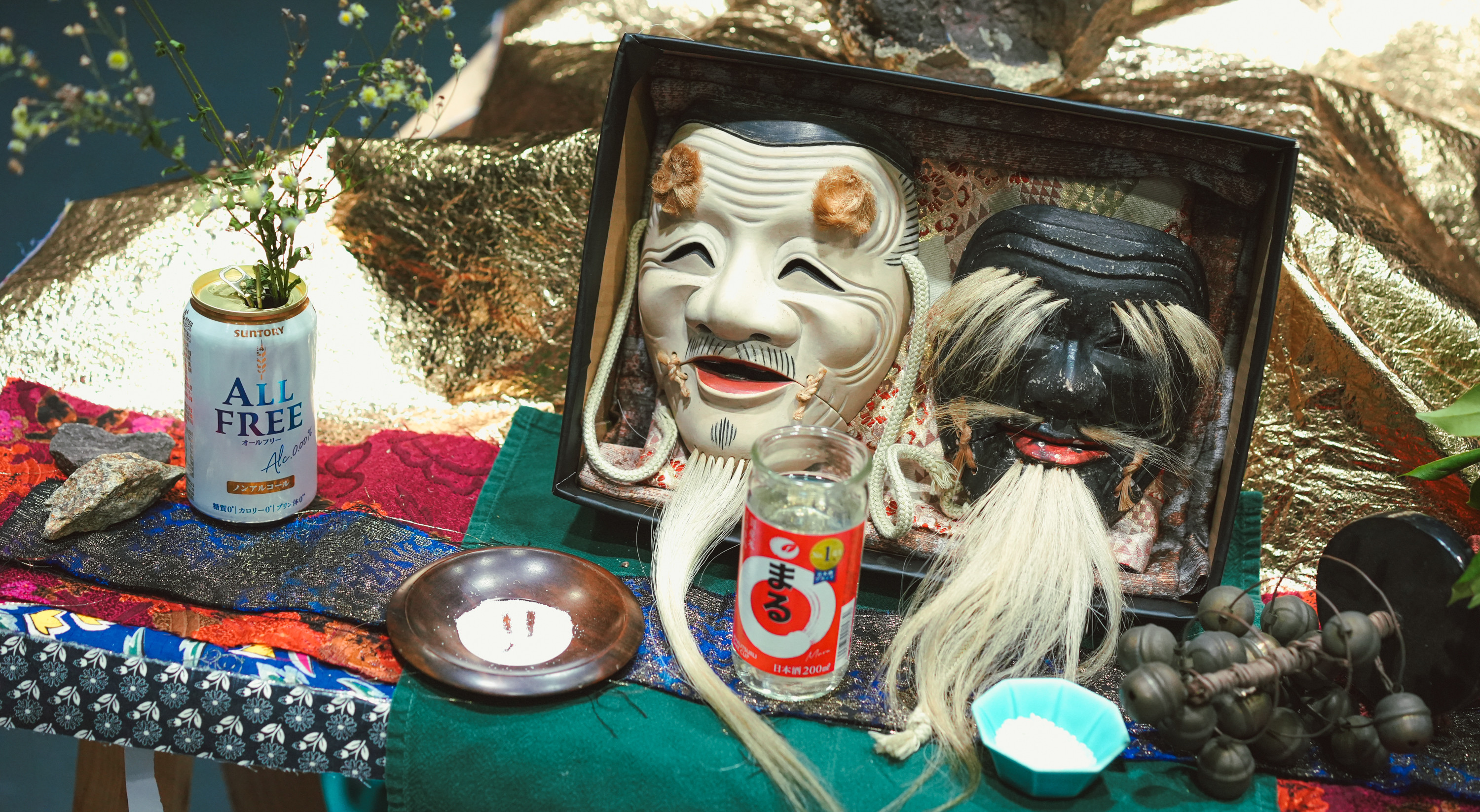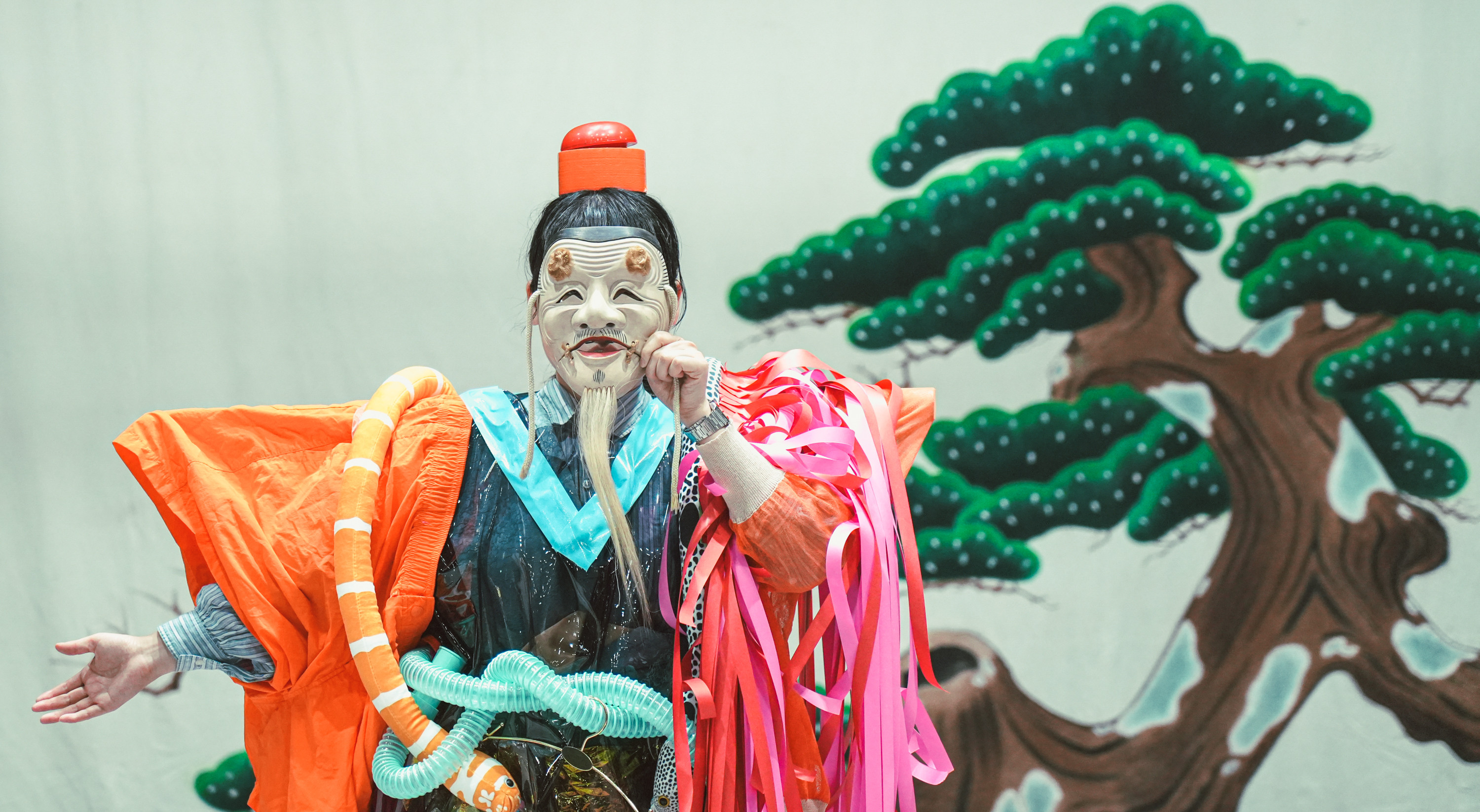Maxime Kurvers
Okina
octoberoct 17 – 19
Thursday october 17
20h
Friday october 18
20h
Saturday october 19
17h
Conceived and directed by Maxime Kurvers. With Yuri Itabashi. Set design Anne-Catherine Kunz, Maxime Kurvers. Costumes Kyoko Fujitani. Lighting design Manon Lauriol. Painted canvas Myrtille Pichon. Artistic collaboration Camille Duquesne. Translator-interpreter Akihito Hirano. Writing and dramaturgy Maxime Kurvers and the team. Co-organizer in Japan Takafumi Sakiyama. Distribution advisor Jérôme Pique.
Production MDCCCLXXI
Coproduction CNDC Angers ; Théâtre Garonne – Scène européenne ; Kinosaki International Arts Center ; Festival d’Automne à Paris
With the support in creative residence of l’Atelier de Paris – Centre de développement chorégraphique national, of La vie brève – Théâtre de l’Aquarium and of The Ménagerie de verre as part of the StudioLab programme
Supported by Arts Council Tokyo (Tokyo Metropolitan Foundation for History and Culture)
Project supported by the Drac Île-de-France - Ministère de la Culture
Project supported by the Région Île-de-France as part of its support for creation in the field of performing arts
The Festival d’Automne à Paris is co-producer of this show and is presenting it in co-realisation with l’Atelier de Paris – Centre de développement chorégraphique national.
Post-Show Discussion
Friday 18 October 2024.
Daycare
Choreography workshop, Saturday 19 October at 5pm
15 per child, aged 5 and over.
Bookings through Atelier de Paris on 01 417 417 07 or by e-mail reservation@atelierdeparis.org
The director Maxime Kurvers furthers his research in theatrical anthropology by bringing the actress Yuri Itabashi face-to-face with the ban which prevents her, in accordance with tradition, from performing Okina, a play and ritual originating from nō theatre. As such, this piece is about how, through the power of the imagination, we can embrace what is forbidden to us.
Over the course of his long-term investigations into the history of theatre, Maxime Kurvers has become increasingly interested in the nō tradition, a form of Japanese dance theatre that has remained faithful to the various codes established in the 15th century. Within this repertoire, Okina distinguishes itself in terms of its storyline and modes of representation. With its roots in Buddhist ceremony, the piece is structured around three sacred dances and, due to its religious character, is strictly to be performed by men only. Women are not allowed to perform it. As part of a double logic to circumvent and make amends, the director entrusts Yuri Itabashi, an actress from contemporary Japanese theatre with the task of overcoming this cultural impossibility of re-enacting the play. The paths she takes, namely those of the spoken word and dance, take us on a journey through reminiscences of an agrarian form of theatre which pre-dated the existence of nō theatre, to the examination of a contemporary reality that allows bans placed on women to perpetuate. The piece becomes a gesture of empowerment in the hands of this actress for whom nothing is no longer impossible.



